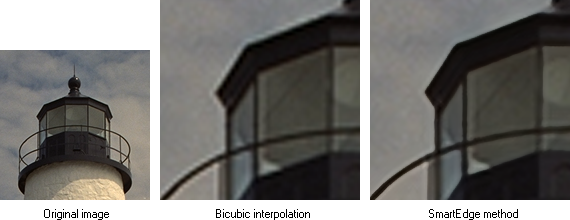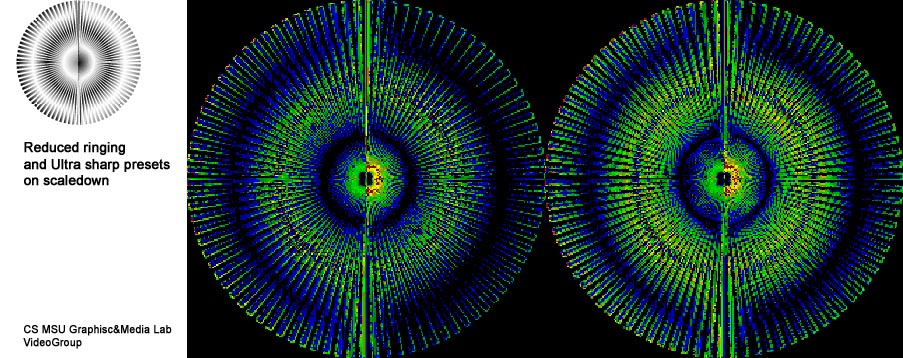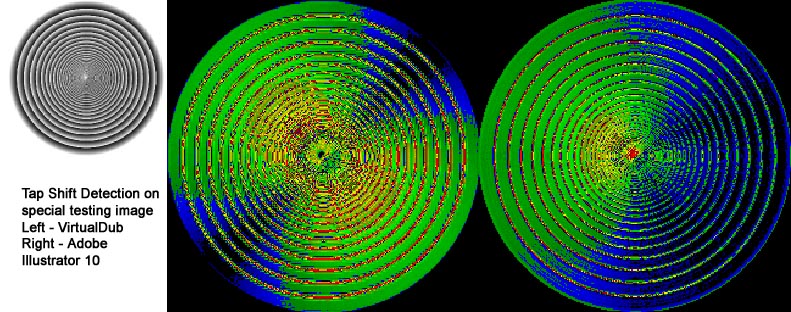At the end of October 2002 we have started the project on "High quality image and video
resampling", supported by Samsung Advanced Institute of Technology.
The project's goal is to design new high-quality methods for resampling of video and still images.
The project included:
-
Development of new linear and edge-adaptive image resampling methods.
-
Development of high-quality MA and MC video de-interlacing methods.
-
Design of metrics for evaluation of quality of different resampling algorithms and extensive testing of existing resampling algorithms.
Example of resampling of the image (down and up) using different algorithms

Linear Image Resampling Algorithm
Our linear image resampling algorithm, "Linear Impress", has the following advantages over the standard linear methods:
- Strong anti-aliasing during down-scaling.
- Adjustable ratio between different resampling artifacts of linear methods (blur, aliasing, ringing).
- "Extra Sharpness" feature for sharpness increase in the process of resampling.
- Possibility of effective hardware implementation.
Edge-adaptive Image Resampling Algorithm
Our edge-adaptive image resampling algorithm, "Edge-adaptive Impress", or "SmartEdge", is the combination of a well known NEDI interpolation algorithm
with some new enhancements developed in our lab. Its features include:
- High edge sharpness of upscaled images.
- No jagged edges artifact.
- Proper functioning in complex image areas (such as areas of fine texture).

More images comparing different image resampling methods.
Metrics for Quality Evaluation
Several metrics were implemented during the project (including LUV-space metrics accounting for
Contrast Sensitivity Function). One metric for measurement of image bluring-sharpening
can be particularly interesting for future research.

Example of bluring-sharpening metric
Extensive testing of different image resampling algorithms has been performed.
Seven "mira" test vector images were created for testing tasks. Another 9 photos
provided by SAIT were used. These 16 images have been processed using 18 resampling methods,
(including methods of well known video-processing tool VirtualDub and Adobe Photoshop 7.0).
Totally we have performed more than 1500 measurements.

Different resampling methods metric example.
These images are obtained by comparison of scaled image with the original image (rasterized from
vector image using Adobe Photoshop). Black color stands for no difference. Blue colors stand for slight
differences. Green, yellow and red colors stand for more noticeable, significant differences.

Usage of test image for subpixel shift detection.
The Project Team